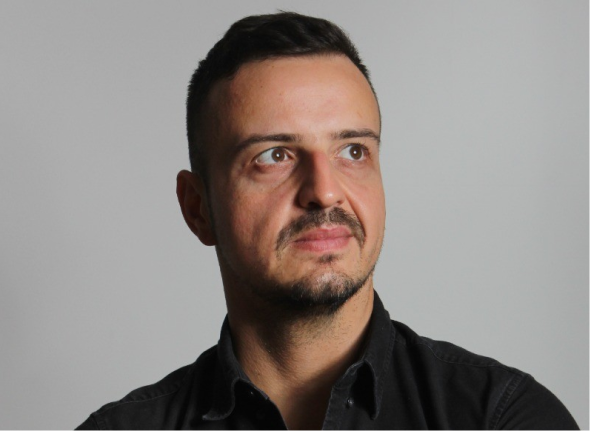A fundamental shift is reshaping financial services through Decentralised Finance (DeFi), an architecture built from first principles rather than layered on top of existing infrastructure. This movement goes beyond the incremental improvements of financial technology, creating a parallel system that redefines assumptions about trust, efficiency and control. Patrick Schueffel, a professor at the Fribourg School of Management and former banking practitioner, explains that this shift represents a complete change in perspective. “DeFi is a paradigm. It changes how we think about finance and financial services,” he said.
This raises urgent strategic questions for financial institutions. As DeFi scales, banks must decide where to engage, what to integrate, and how to remain competitive as core services become programmable and peer-driven. The cost of inaction is not disruption in the distant future, but erosion of margins, loss of customer engagement, and falling behind new infrastructure standards being set by regulators and market leaders.
Where Traditional Finance (TradFi) relies on centralised institutions to act as trusted intermediaries, DeFi replaces them with automated, open-source software. Rather than optimising traditional processes, DeFi builds a new financial system grounded in programmability and decentralisation. A conventional securities trade requires coordination among banks, brokers, exchanges and clearing houses. DeFi enables a direct transaction between buyer and seller on a distributed ledger, producing a single, immutable source of truth. “It’s finance provided by users, for users, through decentralised, peer-to-peer software,” Schueffel noted.
A system designed for resilience and programmability
The disruptive power of DeFi comes from its architectural design, which delivers financial services without bottlenecks or single points of failure. Its infrastructure is fault-tolerant by default. Traditional systems can suffer from outages at any one of several intermediaries. DeFi operates on networks like the Bitcoin blockchain, which runs across thousands of globally distributed nodes. “Even if thousands of nodes fail, the Bitcoin network keeps running smoothly,” Schueffel explained. This distributed structure, supported by cryptographic security, makes DeFi fundamentally robust.
The model also achieves operational efficiency through automation. DeFi runs on smart contracts, which are self-executing lines of code that eliminate manual processing or institutional approval. “It operates entirely on programming logic,” said Schueffel. This guarantees outcomes through transparent code rather than opaque internal processes. The combination of automation, resilience and open-source collaboration allows DeFi to deliver financial services with significant speed and cost advantages. This is not an incremental upgrade, but a structural redesign of financial delivery.
Replicating the bank, one function at a time
DeFi is no longer experimental. It now replicates every major function of a traditional bank through programmable infrastructure. The ecosystem is rebuilding the financial value chain from the ground up, including account management, payments, credit, exchange and investment products. Users can replace conventional bank accounts with self-custodied crypto wallets, and DeFi protocols allow for the tokenisation of real-world assets such as equities, bonds and real estate, which can then be traded directly on-chain. Lending and borrowing are handled through staking protocols, while Automated Market Makers (AMMs) enable instant asset swaps. The system is replicating financial services with increasing sophistication, supported by a composable, programmable backbone.
The only viable strategy is integration
DeFi’s evolution presents incumbent banks with a strategic choice. Leading institutions are no longer debating whether to engage with DeFi. The question now is how to integrate its benefits into regulated, client-facing models. Switzerland has emerged as a key hub for this convergence. Institutions such as Amina Bank and Maerki Baumann have developed hybrid models that offer digital asset services within traditional banking frameworks. This enables them to deliver the performance advantages of DeFi while remaining within regulatory bounds.
Schueffel points to an even greater opportunity for those unburdened by legacy infrastructure. In greenfield markets or among new entrants, DeFi allows for a fundamentally different starting point. “Why not build a core banking system on distributed ledger technology? That’s almost a no-brainer,” he said. This opens the door to leapfrogging traditional models and building next-generation financial infrastructure that is native to the digital age.
Navigating the path forward with risk, talent and leadership
The path to integration involves significant operational and regulatory challenges. Leaders must manage risks that range from governance uncertainty to software-level vulnerabilities. “A single line of faulty code can lead to catastrophic outcomes,” Schueffel warned. He also noted that the anonymous and borderless nature of DeFi complicates oversight and poses serious questions for global regulators.
Addressing these challenges requires a new generation of leadership and talent. Institutions need professionals who are fluent in both finance and technology. “We need engineers who understand finance, and finance professionals who can work with technology,” Schueffel advised. Building organisational capability at this intersection will be essential for any institution seeking to adopt or integrate DeFi infrastructure.
The strategic imperative for financial institutions is no longer whether to engage with DeFi, but how to operationalise integration, manage risk and invest in technical capacity. Banks that act now can shape the future financial infrastructure rather than react to it.
The Future Banking Working Group (FBWG) invites you to our upcoming session on “Understanding TradFi vs DeFi”, a strategic tactical workshop that explores how traditional and decentralised financial systems operate, compete, and converge. The session will examine how both models influence access, innovation, and risk management in today’s evolving financial landscape
In this interactive session, we’ll discuss:
- What are the key differences between traditional finance (TradFi) and decentralised finance (DeFi), and how do their structures, incentives, and governance models compare?
- How does DeFi challenge conventional banking, investment, and lending models, and what lessons can established financial institutions take from its growth?
- How are regulators responding to DeFi’s borderless and permissionless nature, and what frameworks are emerging to address risks around consumer protection, market integrity, and financial stability?
- How can financial institutions integrate elements of DeFi through hybrid models, tokenisation, and blockchain solutions while maintaining compliance, trust, and operational resilience?
- What role do smart contracts, stablecoins, and decentralised identity systems play in shaping the future of finance, and how can institutions manage the associated risks, such as technical vulnerabilities or lack of clear accountability?
Agenda (SGT)
- 4:00 PM – 4:10 PM: Introduction of Understanding TradFi vs DeFi workshop by Urs Bolt, Chairman, The Banking Academy
- 4:10 PM – 4:40 PM: Presentation by Patrick Schueffel, adjunct professor at Fribourg’s School of Management (HEG) and former COO in the banking sector.
-
4:40 PM – 5:00 PM: Q&A
































